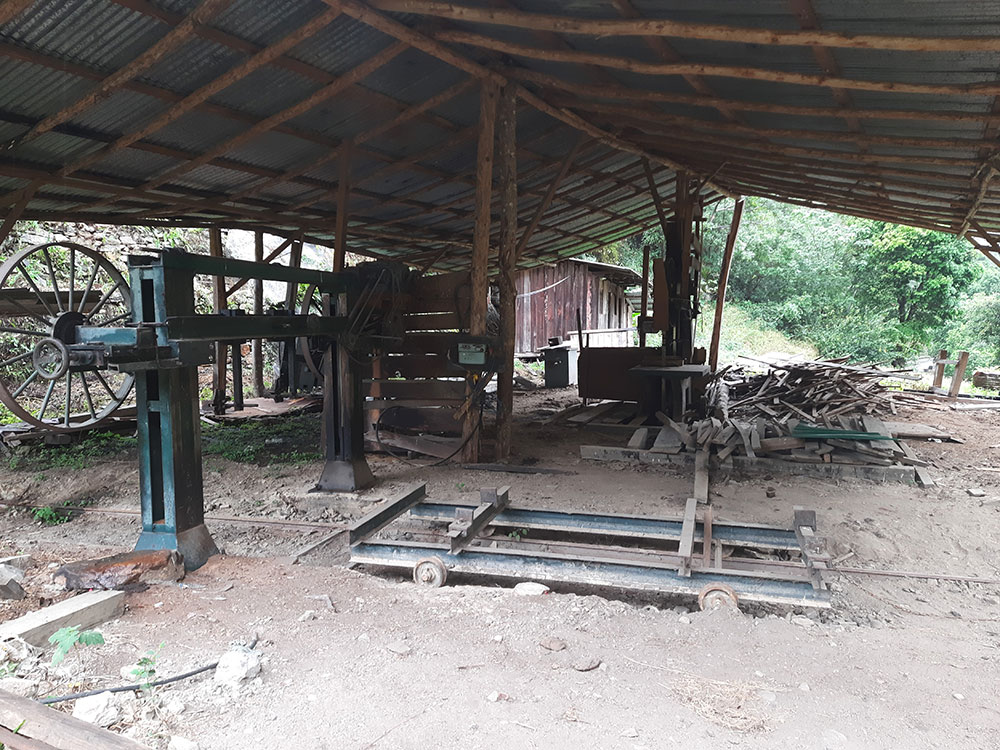Tshering Namgyal | Mongar
Sawn timber has become scarce in Lhuentse and Mongar after numerous sawmills in the dzongkhags closed recently.
The only sawmill that is operating in Mongar, Pema Jamtsho sawmill, is also on the verge of closing. A few years ago, Mongar had at least three sawmills and Lhuentse had one.
Sawmill operators attribute the closure to the government’s timber pricing policy.
The only sawmill in Lhuentse, Sonam Samphel Norbu sawmill, which started operations in 2001, was closed in 2014. The sawmill’s former owner, Phurpa Namgyel, said the timber pricing policy had compelled them to compete with the Natural Resource Development Corporation Limited (NRDCL). He also attributed the loss of business to the widespread use of chainsaws in villages.
Phurba Namgyel said that sawmills used to earn from Nu 25 to Nu 100 per CFT of timber before the introduction of the pricing policy. “Besides a huge waste of more than 60 percent now, there is no demand and our machines are rusting, enveloped in bushes.”
He said contractors who were their main customers use chainsaws, and that the timber is sold at cheaper rates by the community and private forests.
He said he was worried about where to keep his machines, as the dzongkhag has notified him to vacate the government land that he had leased for 30 years. He has a portable sawmill and a fixed sawmill, each worth about Nu 2.5 million.
The sawmill owner said he was in Thimphu to appeal to authorities.
The manager of Pema Jamtsho sawmill in Mongar, Sangay Wangdi, said the portable sawmill, which started operations in 2018, has seen a decline in business. “The business was profitable when sawmills were able to fix timber prices. Now it’s difficult to compete with NRDCL.”
He said that although there is some demand for mixed coniferous timber in the locality, it is available only in Bumthang and the transportation cost is high.
Sangay Wangdi said that a truckload of timber that costs about Nu 5,000 from the nearest NRDCL depot costs about Nu 30,000 to reach Mongar from Bumthang.
“On the other hand, we are forced to sell the timber at government rates. We cannot move our machines either. If the situation remains the same, we might have to shut down.”
However, forest officials said the sawmill owners in the east are not deprived of timber. They could take part and get their share if they are interested.
Chief forestry officer of Mongar Territorial division office, Karma Tempa, said both NRDCL and the Association of Wood Based Industries (AWBI) are provided with 50 percent of timber following a ‘timber extraction and distribution modality’ approach, unlike an initial trend of AWBI and NRDCL having to take part in the auction and bid the prices.
“The opportunity is there and they have a choice over the species of wood, but not many sawmill owners in the east come forward.”
Forestry officials said since there is no discrimination in terms of rate for timber between AWBI members and NRDCL when the timber allotment is made, private sawmill owners should be able to sustain their businesses.
“In addition, there is a huge difference between the log and sawn forms of timbers, by a factor of almost two,” Karma Tempa said.
Forest officials pointed out that the use of obsolete machines by sawmill owners adds more to the wastage of timber while sawing. According to forest officials, there are now modern technologies, and old ones should be done away with to help in better production.
“When the sawmills in the western and the central areas do well, the sawmills in the east should also be able to survive,” the chief forestry officer said.
However, some sawmill owners claim that the sawmills in the west get good quality mixed coniferous timber, some through illegal means.
“They buy from the community and private forests for cheaper rates. This could be one of the reasons why they survive,” a sawmill owner said.
Edited by Tshering Palden


